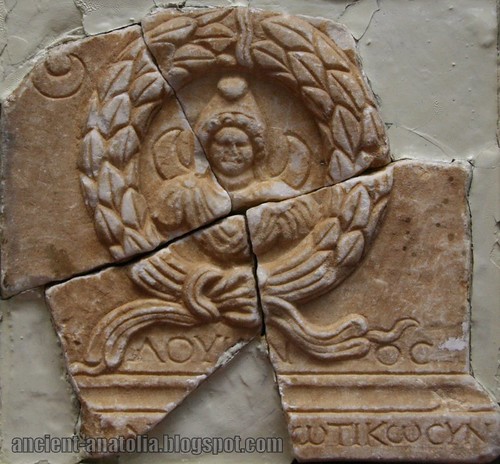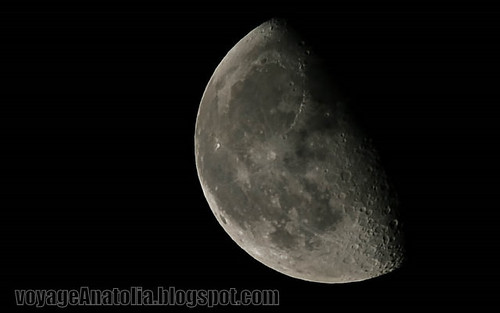
Men Ascaenus of Antioch in Pisidia, originally uploaded by voyageAnatolia.blogspot.com.
Men Ascaenus of Antioch in Pisidia at Yalvac Archaeology Museum
Men was an ancient god in the western interior parts of Anatolia. The roots of the Men cult may go back to Mesopotamia in the fourth millennium BC. Ancient writers describe Men as a local god of the Phrygians.
Lunar symbolism dominates his iconography. He is usually shown with a crescent like open horns on his shoulders, and he is described as the god presiding over the months. He is depicted with a Phrygian cap and a belted tunic. He may be accompanied by bulls and lions in religious artwork. The iconography of Men partly recalls that of Mithras, who also wears a Phrygian cap and is commonly depicted with a bull and symbols of the sun and moon.
The Augustan History has the Roman emperor Caracalla venerate Lunus at Carrhae; this has been taken as a Latinized name for Men. The same source records the local opinion that anyone who believes the deity of the moon to be feminine shall always be subject to women, whereas a man who believes that he is masculine will dominate his wife. David Magie, however, disputes the identification of this ‘Lunus’ with Men, and suggests that Caracalla had actually visited the temple of Sin.
Dr Mehmet Taşlıalan, who has studied the remains of Antioch in Pisidia, has remarked that the people who settled on the acropolis in the Greek colonial era, carried the Men Askaenos cult down to the plain as Patrios Theos and in the place where the Augusteum was built there are some signs of this former cult as bucrania on the rock-cut walls. The Imperial Temple also features an unusual bucranium frieze.
In later times, Men may have been identified with both Attis of Phrygia and Sabazius of Thrace; he may shared a common origin with the Zoroastrian lunar divinity Mah.
